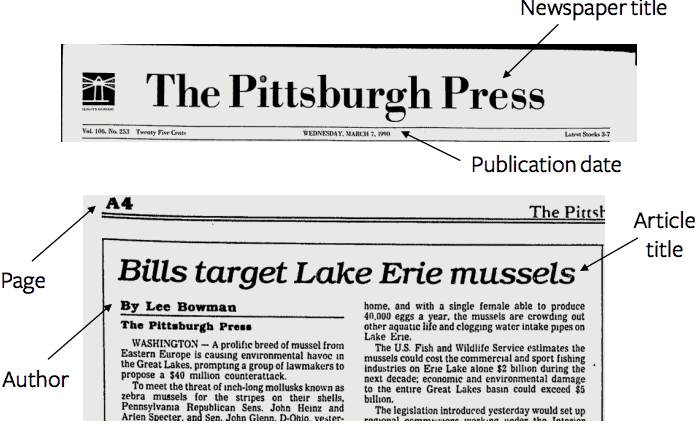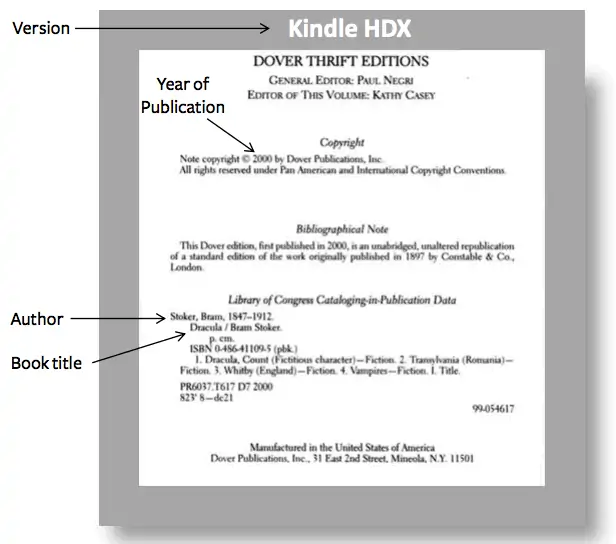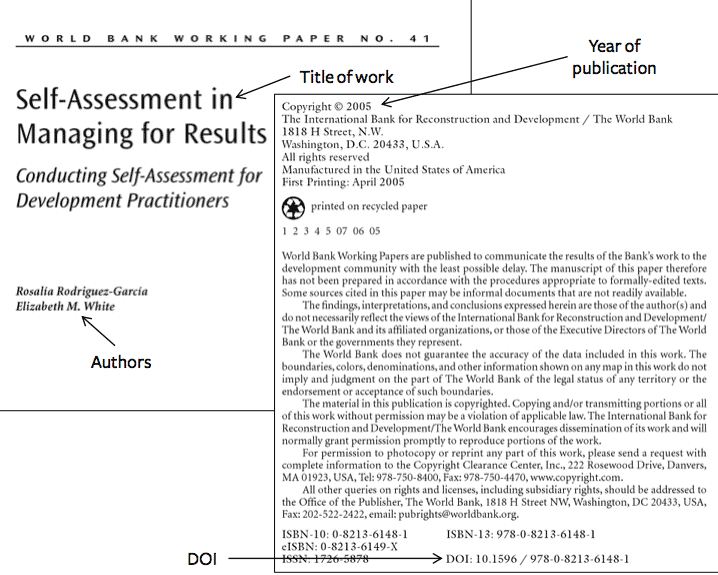- DOI or stable URL if available
- DOI or stable URL if available
- Name of the translator or editor
- Title of the translator or editor (trans. or ed. respectively)
- Name of the chapter author
- Name of the chapter
- Name of the book editor or author
- Page numbers or ranges used
- Volume numbers and/or edition numbers
- New edition number
- Name of forward or introduction author if applicable
- Original publication date
Citing a book in APA (print)
Author, F. M. (Year of Publication). Title of work. Publisher.
James, Henry. (2009). The ambassadors. Serenity Publishers.
(Author Last Name, Publication Year)
Note: Capitalize the first letter of the first word of the title and any subtitles (the first word that follows a colon), as well as the first letter of any proper nouns. See our APA Citation Basics guide or the APA Publication Manual for more information.
Citing an E-book in APA (online or digital book)
An e-book is considered a written work or composition that has been digitized and is readable through computers or e-readers (Kindles, iPads,nooks etc.). As of the APA 7th edition, a special notation does not need to be made for e-reader versions. Simply include the book’s URL or DOI number at the end of the citation. However, if you’re citing an audiobook, scroll down this page to see the different citation structure for audiobooks.
Author, F. M. (Year of Publication). Title of work. Publisher. URL or DOI
Stoker, B. (2000). Dracula. Dover Publications. https://www.overdrive.com/
(Author Last Name, Publication Year)
Citing a book in APA (found in a database)
Some e-books may be available online through your library’s databases or catalogs. According to the 7th edition of APA style, most books found via academic databases do not need to include the database name or link in the citation. This is because these books are usually widely available in many place and resources.
Author, F. M. (Year of Publication). Title of work. Publisher. DOI if available
Rodriguez-Garcia, R., & White, E.M. (2005). Self-assessment in managing for results: Conducting self-assessment for development practitioners. The International Bank for Reconstruction and Development / The World Bank. doi:10.1596/9780-82136148-1
(Author Last Names, Publication Year)
(Rodriguez-Garcia & White, 2005)
Citing an audio book in APA
An audiobook is a book that has been converted into audio files or an audio format. They are also sometimes called “books on tape.”
Author, F. M. (Year of Publication). Title of work (F. M. Narrator, Narr.) [Audiobook]. Publisher. URL or DOI if available
Gaiman, N. (2005). Anansi Boys (L. Henry, Narr.) [Audiobook]. HarperAudio.
(Author Last Name, Publication Year)
Citing a book with an author and an editor
Author Surname, F. M. (Year of Publication). Title of work. (First name initial and last name of editor, Ed). Publisher. URL or DOI
Stevens, E. (2011). Horror stories to chill. (P. Alvarez, Ed). Mountain Publications.
(Author Surname, Year Published)
Citing an edited book (no single author credited)
Editor Surname, F. M. (Ed.). (Year of Publication). Title of work. Publisher. URL or DOI if it exists
Mitchem, J., & Smithwick, L. (2019). Gone dogs: tales of dogs we’ve loved. Thomas Woodland LLC.
(Editor Surname, Year Published)
(Mitchem & Smithwick, 2019)



Here is a video that reviews book citations in APA style:
Troubleshooting
Solution #1: How to cite a book in another language
Books written in another language should contain the translation in brackets next to the title. If the language contains characters that are different from the Roman alphabet, transliterate the alphabet into the Roman alphabet for your citation.
Structure:
Author’s last name, F. M. (Year). Title of the book in original language [Translated title]. Publisher.
Example:
Sanchez, E. (2018). Yo no soy tu perfecta hija Mexicana [I am not your perfect Mexican daughter]. Vintage Espanol.
Solution #2: How to cite a republished translated book
For translated books, include the name of the original author at the start of the citation, but for the year, include the date of publication for the version you are using. After the title, include the translator’s name, and after the publisher, provide the original publication date. For in-text citation, two dates are required. Write the date of the original publication first, then add a slash followed by the current version that you are using.
Reference page structure:
Author’s last name, F. M. (Year). Title of the work (Translator’s F. Last name, Trans.; Edition number ed.). Publisher. (Original work published Year)
Reference page example:
Freud, S. (1950). Beyond the pleasure principle (J. Strachey, Trans., 2nd ed.). Liveright. (Original work published 1920)
In-text citation structure:
Parenthetical structure: (Author last name, date of original publication/date of current version)
Narrative structure: Author last name (date of original publication/date of current version)
In-text citation example:
Parenthetical example: (Freud, 1920/1950)
Narrative example: Freud (1920/1950)
Solution #3: How to cite an ancient Greek or Roman work
Much like translated versions, include the original date of publication after the publisher (or DOI link). However, for ancient texts, be sure to include “ca.” (which stands for “circa”) with the date, followed by B.C.E. or C.E. For the in-text citation, you will also need to include ca. and B.C.E. or C.E. after the author’s name, followed by the date of the current version.
Reference page structure:
Author’s last name, F. M. (Year). Title of the work (Translator’s F. Last name, Trans.; Edition number ed.). Publisher. (Original work published ca. date)
Reference page example:
Homer. (1990). The odyssey (R. Fitzgerald, Trans.). Vintage Books. (Original work published ca. 8 B.C.E.)
In-text citation structure:
Parenthetical structure: Author last name, original date of the work/current version date
Narrative structure: Author last name (original date of the work/current version date)
In-text citation example:
Parenthetical example: (Homer, ca. 8 B.C.E./1990)
Narrative example: Homer (ca. 8 B.C.E./1990)
APA Formatting Guide
APA Formatting
- Abstract
- Annotated Bibliography
- Block Quotes
- et al Usage
- Footnotes
- In-text Citations
- Multiple Authors
- Paraphrasing
- Page Numbers
- Parenthetical Citations
- Reference Page
- Sample Paper
- Title Page
- APA 7 Updates
- View APA Guide